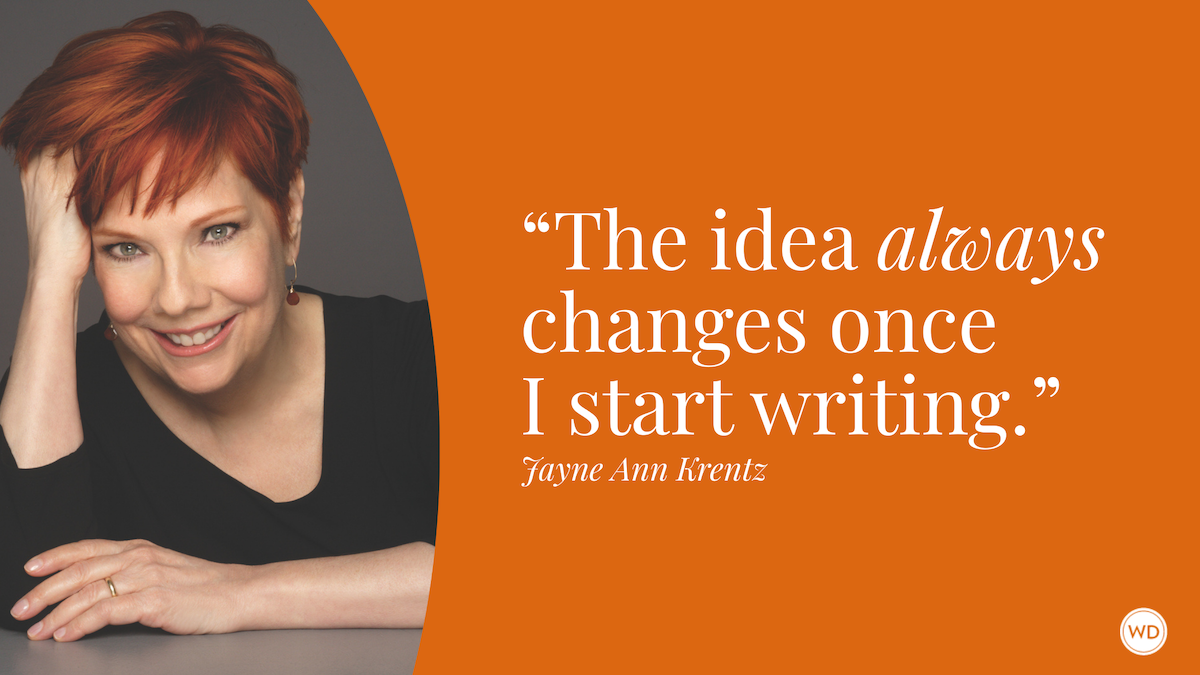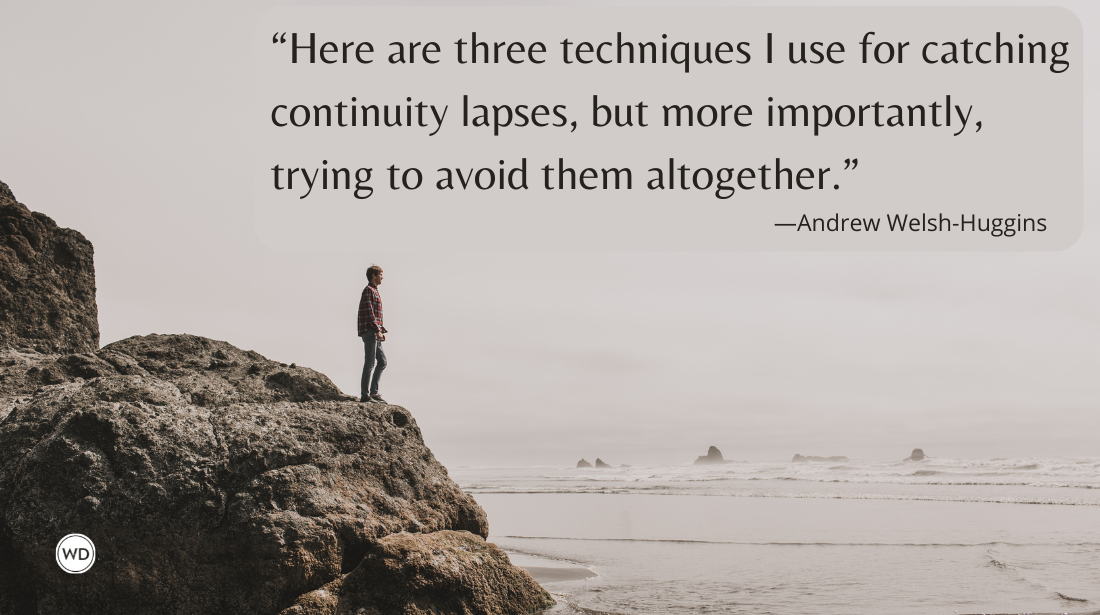How to Craft Compelling Characters
To make characters seem real, you need to tap into what drives them. Use this foolproof method to bring the emotion of your story to life and craft compelling characters.
The source and exact nature of the curious phenomena we refer to as characters remains something of a mystery, but the craft of characterization is not.
Although it’s clearly a cause for celebration—or at least relief—when a character appears in the mind’s eye fully formed, the reality is that for most of us, this is a rare occurrence. Certain techniques are required to will our characters to life. We need to draw on the unconscious, memory, the imagination and the Muse until our characters quicken, assume clear form and, with hope, begin to act of their own accord.
Can this process—so inherent to the success of any novel—really be condensed into a single method? In my experience as both writer and writing instructor, the answer is, to some extent, yes. The key is first to understand what your characters require from you in order to come to life, and then to determine how you can draw on your best available resources to give them what they need.
CHARACTERISTICS OF COMPELLING CHARACTERS
The most compelling characters are those who appear internally consistent and yet are capable of surprise. In my own work, I’ve found that the art of crafting such fully realized characters can be boiled down to four crucial elements: a driving need, desire, ambition or goal; a secret; a contradiction; and vulnerability. Let’s take a closer look at each one.
A Driving Need, Desire, Ambition or Goal
The fundamental truth to characterization is that characters must want something, and the stronger the want, the more compelling the resulting drama. This is because desire intrinsically creates conflict, the primordial goo in which character is formed.
Take, for example one of the most memorable characters in American literature—Blanche Dubois, from Tennessee Williams’ A Streetcar Named Desire. At the start of the story, Blanche has lost her family home and has been left with nowhere to stay. Desperate, she has come to New Orleans to find her sister, Stella, and ask to be taken in.
This is a perfect demonstration that simply by giving the character a deep-seated need or want, you can automatically create conflict, for the world is not designed to answer our desires as easily as we might hope.
*****
When you take this online writing course, you will learn how to create believable fiction characters and construct scenes with emotional depth and range. Create characters readers will love and develop a strong point of view for your fiction book today!
*****
A Secret
For your character, a secret is that inclination or trait (such as a psychological disposition to dishonesty, violence, sexual excess, or the abuse of alcohol or drugs, to name a few) or an incident from the past that, if revealed, would change forever the character’s standing in her world, among co-workers, neighbors, friends, family, lovers. Secrets inform us of what our characters have to lose, and why.
Drawing on the example of Blanche Dubois, her secret is that through drink and illicit sexual liaisons, she has become so emotionally and physically dissipated she could not hold on to the family home.
We are our own best source for understanding secrets. We know our own, and if we’re insightful, we understand how they affect our behavior—specifically, how they make us afraid.
A Contradiction
We all know people who are both shy and rude, cruel but funny, bigoted but protective. This complexity, which seems to particularly manifest itself during times of stress or conflict, is what can make a person inherently unpredictable, setting the stage for the kind of surprising behavior that can keep readers enthralled, wondering what might happen next.
Our senses and minds are tuned to focus on irregularities—the thing that doesn’t quite fit, doesn’t make sense, or is simply changing. This is an evolutionarily adaptive trait; it helps in analyzing the environment for threats. But it also attunes us to whatever is unusual in what we perceive; contradictions reveal what we couldn’t predict, the enigma, the surprise.
Again, let’s look at how this applies to Blanche Dubois: She is desperate and weak, hopelessly vain, with an alcoholic’s capacity for denial and delusion—but she is also fiercely proud and resourceful with a surprising steeliness. It’s contradictions like these that can automatically pique a reader’s interest.
Vulnerability
Nothing draws us into a character more than her vulnerability. When people appear wounded or in need of our help, we are instantly drawn to them—it’s a basic human reflex. We may also sometimes be repelled or frightened, but either way, the fact of the matter is that injury to another person instantly triggers a strong response.
Obviously, vulnerability may be the result of the character’s secret: He is afraid of being found out. Or it may come from the intensity of his need or want—because, as we all know, desire can render us naked in a fundamental way. For your character, the ambition and focus inherent in a strong desire can imply some form of inner strength, while at the same time rendering the character vulnerable to being deprived of what he most wants.
Blanche’s desperation to find a safe place makes her vulnerable, as does the tawdry nature of her secrets, which threaten to shame her beyond redemption if revealed. In other words, needs or desires, secrets, contradictions and vulnerability are almost always interconnected.
METHODS FOR DEEPENING CHARACTERIZATIONS
Often our characters first appear to us as we flesh out the idea for a story. But characters who emerge from story ideas can often be flat or two-dimensional; this is because at that early stage, they serve the purpose of filling a role, rather than acting as independent beings with needs and fears and affections and concerns “outside
the story.”
Compelling characters are not cogs in the machine of your plot; they are human beings to whom the story happens.
Some stories begin with the characters, of course, and the narrative emerges from an exploration of their needs, their defenses, their secrets and contradictions, or some problem they face. The trick in those cases is making sure the narrative doesn’t meander, creating, as writer Philip Larkin called it, “a beginning, a muddle and an end.”
But more often in mainstream fiction and especially genre fiction, the novel begins with a story idea, and the characters need to be fleshed out to keep them from being stock players in the drama. We might wonder how many uniquely memorable world-weary detectives there can be, for example—and yet every year at least one more seems to emerge from the wave of crime novels crashing onto bookstore shelves. It takes skill and insight to breathe life into stock characters, something too often dismissed by those who disdain genre fiction as inferior.
So how do we flesh out our characters when they arise from the needs of our stories, or when they otherwise lack the specificity, uniqueness or power necessary to engage a reader (or the writer)? The best inspiration often comes from within us—and from our experiences with the people in our lives.
Real-Life Characters
Near the end of his life, John Updike wrote a poem titled “Peggy Lutz, Fred Muth,” in which he thanked his childhood friends and classmates—the “beauty” and “bully,” the “fatso” and others—“for providing a sufficiency of human types … all a writer needs.”
Whether we know it or not, our minds and hearts are populated by all the characters we will ever need—though we may disassemble them and rearrange the parts into composites for variation.
To fully tap this potential, begin by reflecting upon the following real people in your life—jot down their names, fix them in your mind, remember a few details about their lives, their physical appearances, the effect they’ve had on you, and anything else you think would be important if you were to describe them to someone who didn’t already know them.
Include in your exploration:
A family member you feel particularly close to
A family member you particularly dislike, or from whom you’re estranged
Your closest friend from childhood with whom you’ve lost touch
Your closest friend from childhood with whom you’re still in contact
A stranger whose path crossed yours this past week
A person you know personally and admire
A person you know personally and fear
The love who got away
The love you wished had gotten away
Your first love
Your greatest love
Your greatest childhood nemesis
Your greatest adulthood nemesis
The person from childhood who annoyed you the most
The person in your present-day life who annoys you the most
Your favorite neighbor
Your least-favorite neighbor
Your favorite co-worker
Your least-favorite co-worker
Your postman or someone else you deal with on a “business” level daily
An older person who has inspired you
A child who fascinates you
Someone for whom you harbor a secret crush or feel sexual attraction
Someone you believe has a crush on you
A person who believed in you
A person who thought you would never amount to anything
A person whose life you would never trade for your own
The list can go on, of course; it’s limited only by one’s own inventiveness. But writing out such a list provides a larger cast of characters than we originally might have realized we possessed. We can sometimes unwittingly get into ruts, writing variations on the same character over and over—the overbearing parent, the needy lover, the insufferable phony, the lonely aunt. The value of using people we know to inspire our characters is that we already see them so vividly and specifically.
Emotional Triggers
Of course, we know a great deal about the people in our lives, but we don’t know everything—and this is why real people provide excellent but not perfect source material for characters. We will also have to draw on our own lives, at least as a starting point, to fathom a character’s inner world.
It often surprises me how frequently writers, especially young writers, fail to explore the rich veins of emotion they possess in their own lives, so they can translate that to their characterizations.
The most important emotional incidents to explore in a character’s life—and one’s own—are:
THE MOMENT OF GREATEST FEAR: This is perhaps the most important emotional trigger, because almost all of our limitations, failures, frustrations and disappointments—and thus our secrets and vulnerabilities—can be traced back to or relate to some fundamental fear.
THE MOMENT OF GREATEST COURAGE: This may be physical valor, moral isolation or simply persisting in the face of some dread.
THE MOMENT OF GREATEST SORROW: Think of death, grief, loss.
THE MOMENT OF GREATEST JOY: It’s strange how nebulous moments of joy can seem—and what a loss. At what stage in your character’s life (or in your own) did the golden moment occur? What’s happened since?
THE WORST FAILURE: Ouch, I know, but don’t shun this moment; from a writer’s point of view, it’s golden (as are all our travails, sorrows, embarrassments and screw-ups—embrace them).
THE MOMENT OF DEEPEST SHAME: Shame is connected to self-image, and this moment will be when that image was seriously undermined in a particularly personal way in front of others.
THE MOMENT OF MOST PROFOUND GUILT: This involves some violation of a moral code. It may also make us ashamed, but guilt involves having knowingly done something wrong.
THE MOMENT OF MOST REDEMPTIVE FORGIVENESS: If you’ve been forgiven for some serious wrong, it’s not likely you’ve forgotten it. It’s permitted you to regain your place with some crucial loved one.
When performing this exercise, my students sometimes get caught up on trying to think of the “greatest” such moments. Don’t fall into this needless trap. Instead, think merely of one moment (presumably of many) of particularly strong impact in any one category.
Obviously, plumbing your own life will not provide access to the whole of your characters’ inner lives (unless your characters inhabit the same world you do). Rather, these moments provide touchstones, points of access to begin the exploration into similar moments in your characters’ lives—a necessary but not sufficient precondition for a compelling portrayal.
Each of these triggers a vulnerability or a secret, perhaps a desire, maybe even a contradiction, depending on context. By envisioning these scenes in your characters’ lives, after first exploring them in your own, you gain key insights into the formative episodes in their emotional lives, and, with hope, begin to see them more vividly in your mind’s eye, the better to render them on the page.
The key is to intuit the character so distinctly she seems capable of acting on her own volition. Once this happens—and as I said at the outset, it’s a mystery how or why it does—you’re capable of beginning the dialogue that will form your story, asking your character: Where are you going? Why? How will you get there? With whom? And who will you have become when the journey is over?
David Corbett is the award-winning author of five novels, the story collection Killing Yourself to Survive and the nonfiction work, The Art of Character. David is a regular contributor to Writer's Digest. Find him online at davidcorbett.com. Follow him on Twitter @DavidCorbett_CA.









